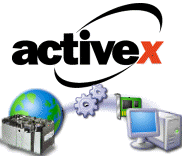Business Intelligence OLAP Solutions and Custom Microsoft.NET Applications
 RECSTORE, Inc., a publically traded
outsource medical records storage company (more), wanted to make it easier for its client hospitals to order medical records.
We are using the pseudonym "RECSTORE" to protect their confidentiality from search engines. RECSTORE had already developed an
application called DeliverExpress to manage the retrieval of medical records with a high-performance user inteface. However,
ease-of-deployment became more important than user interface conveniences. This is the story of how we developed a new web
interface for DeliverExpress. As of this writing, the DeliverExpress Web Edition is now being used by over 1,000 health care
professionals in hospitals throughout Northern California.
RECSTORE, Inc., a publically traded
outsource medical records storage company (more), wanted to make it easier for its client hospitals to order medical records.
We are using the pseudonym "RECSTORE" to protect their confidentiality from search engines. RECSTORE had already developed an
application called DeliverExpress to manage the retrieval of medical records with a high-performance user inteface. However,
ease-of-deployment became more important than user interface conveniences. This is the story of how we developed a new web
interface for DeliverExpress. As of this writing, the DeliverExpress Web Edition is now being used by over 1,000 health care
professionals in hospitals throughout Northern California.  The debate about how to preserve fat client ease-of-use in our web pages came to a head over
the multi-column scrolling list provided by Oracle Forms. RECSTORE wanted the records already selected
to be partially hidden so that the user would not have to scroll the web page to see previous selections.
Furthermore, the selected records grid required a checkbox column to make it easy to remove records.
Unfortunately, standard web page controls are encoded in HTML and the only scolling list facilities
that HTML provides is the select tag and frames. Select tags are only useful for menu selections
because they only support one value per row and no embedded controls such as checkboxes.
The debate about how to preserve fat client ease-of-use in our web pages came to a head over
the multi-column scrolling list provided by Oracle Forms. RECSTORE wanted the records already selected
to be partially hidden so that the user would not have to scroll the web page to see previous selections.
Furthermore, the selected records grid required a checkbox column to make it easy to remove records.
Unfortunately, standard web page controls are encoded in HTML and the only scolling list facilities
that HTML provides is the select tag and frames. Select tags are only useful for menu selections
because they only support one value per row and no embedded controls such as checkboxes.